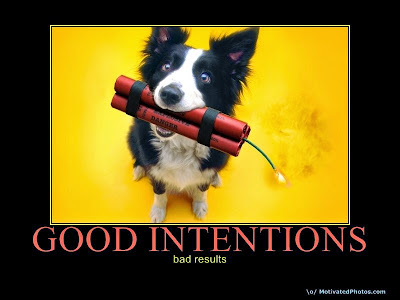No último postal, "
A abominação da eficiência - o anti-Mongo (parte I)", no texto que cito, o autor fala das organizações "Orange":
"This is the worldview of the scientific and industrial revolutions. At this stage, the world is no longer seen as a fixed universe governed by immutable rules of right and wrong. Instead, it is seen as a complex clockwork, whose inner workings and natural laws can be investigated and understood.
...
This worldview dominates management thinking today; it is the (often unconscious) perspective that permeates what is taught in business schools across the world.
.
Achievement-Orange thinks of organizations as machines. The engineering jargon we use to talk about organizations reveals how deeply (albeit often unconsciously) we hold this metaphor. We talk about units and layers, inputs and outputs, efficiency and effectiveness, pulling the lever and moving the needle, information flows and bottlenecks, re-engineering and downsizing. Leaders and consultants design organizations; humans are resources that must be carefully aligned on the chart, rather like cogs in a machine; changes must be planned and mapped out in blueprints, then carefully implemented according to plan. If some of the machinery functions below the expected rhythm, it’s probably time to inject some oil to grease the wheel with a “soft” intervention, like a team-building exercise. The metaphor of the machine reveals how much Orange organizations can brim with energy and motion, but also how lifeless and soulless they can come to feel."
Claro que a visão "Orange" representou um salto face às visões anteriores e trouxe-nos coisas muito importantes e úteis. No entanto, trouxe-nos Magnitogorsk, trouxe-nos Metropolis, trouxe-nos a paranoia pela eficiência e crença absoluta na razão. Pessoalmente, posso dizer que o momento em que a semente que minou a minha devoção cega pelo mundo "Orange" foi posta na minha cabeça foi aquando do choque de ver num filme de entretenimento (Indiana Jones), que um coração humano retirado de um corpo e segurado por um sacerdote de Khali, continuava a pulsar.
Ao longo destes anos tenho chamado muitos nomes a esta gente que se governa exclusivamente pela razão, quase sempre macro-economistas que querem explicar o mundo com fórmulas matemáticas, tríade, encalhados, jogadores amadores de bilhar,
muggles ... Um desses encalhados, José Reis mereceu este postal em Janeiro de 2011, "
Retrato de um encalhado". Os encalhados, como vêem o mundo como uma máquina, planeiam tudo e estão impreparados para as consequências, para as respostas do mundo, porque o mundo não é uma máquina, porque o mundo não é explicável pela física newtoniana. O mundo é um ser vivo, e o que funciona hoje, falha amanhã ponto.
Os políticos socialistas, chamem-se eles Paulo Portas, ou Jerónimo & Martins, acham que o mundo é uma máquina sobre a qual se podem lançar leis e regras impunemente. O que me mete mais medo em qualquer político é a falta de medo pelas consequências, é a ideia de que se sabe tudo e se estudou tudo. Lembram-se dos tipos do leite? O exemplo do leite devia ser bombardeado a toda gente neste país, "
Karma is a bitch!!! Ou os jogadores de bilhar amador no poder!" Organizações de produtores de leite, muito preocupadas com as importações de leite, defenderam e pressionaram para que fossem criadas leis que deram cabo da capacidade exportadora do sector. Estavam tão preocupados com as importações de leite que quiseram que os portugueses tivesse a origem do leite na embalagem, para saber que estavam a comprar leite francês ou alemão. Trouxas, esqueceram-se que Portugal exportava muito mais leite do que aquele que importava. Os espanhóis, grandes consumidores de leite português sem o saberem, começaram a preferir leite espanhol, ainda que mais caro (suponho), porque agora podem ver a origem na embalagem. Imaginem, façam o paralelismo para o à vontade com que se legisla sobre tudo e um par de botas sem pensar nas consequências, sem pensar nas "
unintended consequences".
Conseguem recuar no tempo e recordar o espírito do tempo acerca da competitividade portuguesa? Lembram-se do que diziam os os membros da tríade (académicos, paineleiros, jornalistas) sobre a competitividade portuguesa? Lembram-se dos apelos à saída do euro, dos apelos ao proteccionismo? Não se lembram? Recordem
estes 25 cromos! E lembram-se sobre o que aqui escrevíamos no tempo de Sócrates a 2 de Janeiro de 2011
sobre as PME e a competitividade da economia portuguesa? Acham-me um socratista?
Todos devíamos ter mais cuidado com a quantidade de poder que deixamos os políticos terem sobre a nossa vida pessoal e comunitária. Mesmos os mais bem intencionados atiram-nos barras de dinamite com a mecha acesa.
Os da nossa cor estão no poder e, por isso, concordamos que mais poder lhes seja atribuído. Quando os da cor dos outros chegam ao poder ficamos com medo do poder que eles agora têm, e vice versa.
Trechos retirados de Laloux, Frederic. "Reinventing Organizations: An Illustrated Invitation to Join the Conversation on Next-Stage Organizations"






























%2006.21.jpeg)












